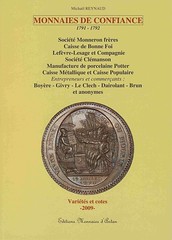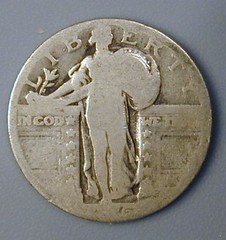
About UsThe Numismatic Bibliomania Society is a non-profit organization promoting numismatic literature. For more information please see our web site at coinbooks.org SubscriptionsThose wishing to become new E-Sylum subscribers (or wishing to Unsubscribe) can go to the following web page link MembershipThere is a membership application available on the web site Membership Application To join, print the application and return it with your check to the address printed on the application. Membership is only $15 to addresses in the U.S., $20 for First Class mail, and $25 elsewhere. For those without web access, write to: David M. Sundman, Secretary/TreasurerNumismatic Bibliomania
Society AsylumFor Asylum mailing address changes and other membership questions, contact David at this email address: dsundman@LittletonCoin.com SubmissionsTo submit items for publication in The E-Sylum, just Reply to this message, or write to the Editor at this address: whomren@coinlibrary.com
BUY THE BOOK BEFORE THE COINYou won't regret it! |
- WAYNE'S WORDS: THE E-SYLUM SEPTEMBER 20, 2009
- NUMISMATIC LITERATURE DEALERS AT WHITMAN PHILADELPHIA SHOW
- LATEST ISSUE OF THE BOOKSHELF FROM DAVID FANNING
- DAVID SKLOW MAIL BID SALE #8 CLOSES OCTOBER 3, 2009
- NEW BOOK: ANCIENT COIN AUCTION CATALOGS 1880-1980 BY JOHN SPRING
- NEW BOOK: MONNAIES DE CONFIANCE 1791 - 1792
- NEW BOOK: RED BOOK OF U.S. COINS - PROFESSIONAL EDITION
- BOOK REVIEW: ALEXANDRIA BY LINDSEY DAVIS
- KRAUSE DISCOUNTS STANDARD CATALOG CD SETS
- ORIGINAL RED AND BLUE BOOK SHOP DUMMIES TO BE EXHIBITED
- JOHN REICH COLLECTORS SOCIETY E-NEWSLETTER HAS NEW EDITOR
- MEDAL EXHIBITION OPENS AT BELSKIE MUSEUM
- DID MAN'S LETTER DRIVE MINT TO PROTECT STANDING LIBERTY QUARTER DATE?
- E-SYLUM MAILING NOTES
- GOOGLE ACQUIRES RECAPTCHA TO POWER BOOK SCANNING
- QUERY: R. M. SMYTHE AUCTION #199 PRICES REALIZED SOUGHT
- QUERY: STATUS OF THE NUMISMATIC INDEX OF PERIODICALS
- MORE ON COUNTERMARK VS. COUNTERSTAMP
- MORE ON COINS PICTURED ON COINS
- MORE ON THE U.S. SHIP/FRIGATE CONSTITUTION
- MORE ON THE ELLA QUINN GOLD COIN HOARD
- QUERY: GRATIANUS SOLIDUS FROM THE LYONS MINT
- NEW YORK TIMES ARTICLE ON IZZY SWITT'S 1933 DOUBLE EAGLES
- HERITAGE AUCTION GALLERIES SUED - SHILL BIDDING ALLEGED
- NATIONAL GOLD EXCHANGE CREDITOR DISPUTES BANKRUPTCY PLAN
- ODYSSEY MARINE REACHES AGREEMENT WITH BRITISH GOVERNMENT
- DICKIN MEDAL-WINNING PIGEON PADDY HONORED WITH PLAQUE
- THE 1900 THEFT OF ADMIRAL NELSON'S MEDALS
- BRIXTON POUND LAUNCHED
- CACHE OF COINS FROM THE BAR-KOKHBA JEWISH REVOLT FOUND
- THE ENGLISH PENNY - EUROPEAN DIRECTIVE
- FEATURED WEB SITE: THE KITTREDGE COLLECTION
WAYNE'S WORDS: THE E-SYLUM SEPTEMBER 20, 2009

Among our recent subscribers are David Hartwood, courtesy of Bill Snyder, Luciano Giannoni and Ernest Swauger. Welcome aboard! We now have 1,265 subscribers.
This week we open with word from several numismatic literature dealers, announcements of three new numismatic books, and a book review.
Other topics include the Belskie Museum medal exhibit, a man's quest to save the date on Standing Liberty Quarters, and the Numismatic Indexes Project (NIP).
Several legal topics are discussed this week, including the 1933 Double Eagle lawsuit, a lawsuit against Heritage, and the bankruptcy of National Gold Exchange.
To learn about the theft of Admiral Nelson's gold medals and Paddy the Pigeon's Dickin medal, read on.
Wayne Homren
Numismatic Bibliomania Society
NUMISMATIC LITERATURE DEALERS AT WHITMAN PHILADELPHIA SHOW
Numismatic literature dealer Charles Davis writes:
 I will have a booth (tables 146-152) at the new Whitman Philadelphia show (Philadelphia Convention Center, 11th & Arch) with public hours Thursday 24th - Saturday 26th where I will have some auction lots for the October 17th mail bid sale available for viewing.
I will have a booth (tables 146-152) at the new Whitman Philadelphia show (Philadelphia Convention Center, 11th & Arch) with public hours Thursday 24th - Saturday 26th where I will have some auction lots for the October 17th mail bid sale available for viewing.
The catalogue and 225 photographs of lots are available on our website http://www.vcoins.com/ancient/charlesdavis . The print version will be mailed Monday.
LATEST ISSUE OF THE BOOKSHELF FROM DAVID FANNING
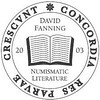 David F. Fanning Numismatic Literature has published the September issue of The Bookshelf, their bimonthly fixed price list of numismatic literature. Highlights include: Chauncey Lee's 1797 "The American Accomptant," the first volume known to use a printed dollar sign and the first to depict a U.S. federal coin; early Mint Reports in folio; a set of Akers on U.S. gold; 1796 and 1813 British parliamentary papers on counterfeit coppers; and Dr. Benjamin Rush's 1796 eulogy of David Rittenhouse. Hard copies have been sent to active customers. It is also available for downloading from the company's Web site at
www.fanningbooks.com
.
David F. Fanning Numismatic Literature has published the September issue of The Bookshelf, their bimonthly fixed price list of numismatic literature. Highlights include: Chauncey Lee's 1797 "The American Accomptant," the first volume known to use a printed dollar sign and the first to depict a U.S. federal coin; early Mint Reports in folio; a set of Akers on U.S. gold; 1796 and 1813 British parliamentary papers on counterfeit coppers; and Dr. Benjamin Rush's 1796 eulogy of David Rittenhouse. Hard copies have been sent to active customers. It is also available for downloading from the company's Web site at
www.fanningbooks.com
.
DAVID SKLOW MAIL BID SALE #8 CLOSES OCTOBER 3, 2009
A gentle reminder that Mail Bid Sale #8 of Numismatic Literature will close Saturday October 3, 2009 at 8PM MT. Bidding is accepted via phone, fax, email, and USPS.
 David Sklow-Fine Numismatic Books
David Sklow-Fine Numismatic Books
P.O. Box 6321
Colorado Springs, CO 80934
PH (719)-302-5686
FAX (719) 302-4933
numismaticbooks@aol.com
www.finenumismaticbooks.com
NEW BOOK: ANCIENT COIN AUCTION CATALOGS 1880-1980 BY JOHN SPRING
John Spring: Ancient Coin Auction Catalogues 1880-1980, just published September 2009, 374 pages, A4, illustrated throughout with portraits of the cataloguers and photographs of the locales in which the major auction houses worked, 886 catalogues from England, the continent and the United States listed and described physically even down to the detail of plate content, white laminated boards.
The parameters the author set out were to begin with 1880 with the first use of photographic plates, and include each catalogue through 1914 that included a single plate of ancients. That was increased to two plates through 1945 and five plates thereafter. The census was stopped after 1980 with the proliferation of dealers.
To order the book, see: Spring: Ancient Coin Auction Catalogues 1880-1980 (www.vcoins.com/ancient/charlesdavis/store/viewitem.asp?idProduct=2485)
NEW BOOK: MONNAIES DE CONFIANCE 1791 - 1792
Philip Mernick writes:
168 pages reprenant les différents types d'assignats métalliques avec leurs variétés.
Histoire et cotation dans 4 états de conservation.
Très nombreuses photographies.
Papier 100 gr demi mat.
Format 15 x 21,5 cm dos carré collé.
29€ (port 5€ en France) - Commandes par mail à contact@infonumis.info
For those of us (including me) who don't read French, Hadrien Rambach kindly provided the following translation:
NEW BOOK: RED BOOK OF U.S. COINS - PROFESSIONAL EDITION
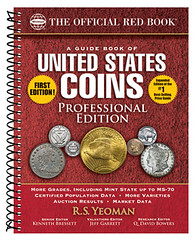 Whitman Publishing is releasing a new, expanded version of its best-selling Guide Book of United States Coins (known within the hobby as the "Red Book"). The 384-page volume, called the Professional Edition, is intended for intermediate and advanced collectors, professional coin dealers, auctioneers, and investors. It will be available in October 2009, with a sneak preview at the Whitman Coin and Collectibles Philadelphia Expo (September 23–26).
Whitman Publishing is releasing a new, expanded version of its best-selling Guide Book of United States Coins (known within the hobby as the "Red Book"). The 384-page volume, called the Professional Edition, is intended for intermediate and advanced collectors, professional coin dealers, auctioneers, and investors. It will be available in October 2009, with a sneak preview at the Whitman Coin and Collectibles Philadelphia Expo (September 23–26).
"The Professional Edition is a companion to the regular-edition Red Book, not a replacement," said Whitman publisher Dennis Tucker. "Each book contains information that the other doesn't, and each will be published annually."
The Professional Edition is 45% larger than the regular-edition Red Book, at 8.5 x 11 inches, and is spiralbound for convenient reference. It retails for $29.95, with a searchable DVD version available for $27.95.
Features of the Professional Edition include:
- Detailed coverage of every federal coin type, half cents through double eagles, plus classic commemoratives and Proof and Mint sets.
- Expert guidance on striking and sharpness characteristics for each type—valuable information when inspecting coins for purchase.
- Insight on availability and condition rarity for each type.
- Detailed grading instructions, including for Mint State and Proof coins.
- Certified population summaries for every date and mintmark—including the number certified, the average grade, and the percent in Mint State.
- Expanded valuations, including multiple Mint State and Proof levels, plus Full Bands, Full Bell Lines, Cameo / Deep Cameo, and other specialized designations.
- Auction records for coins listed.
- Additional die varieties in every denomination, with closeup photographs for easy identification.
- Informative chart notes that expand on the history, characteristics, and market values of significant coins.
- Detailed research, estimated mintages, and market information on early 1800s–early 1900s Proof coinage, including gold.
- High-quality, full-color photographs of both circulation strikes and Proof coins, for every type.
- Enlargements of key focal points and varieties, many more than in the regular edition.
- A groundbreaking appendix on modern counterfeit coins, including research by Dr. Gregory DuBay.
- A gallery of large-size images of early Proof coins.
The Professional Edition's editorial team consists of Senior Editor Kenneth Bressett, Research Editor Q. David Bowers, and Valuations Editor Jeff Garrett. Dozens of hobby leaders contributed their expertise to the book's production.
A Guide Book of United States Coins, Professional Edition
ISBN 0794828426
384 pages, full color.
8.5 x 11, spiralbound softcover.
Retail $29.95. Also available in searchable DVD format for $27.95.
For more information, see:
2010 Red Book U.S. Coins - Professional Edition
(http://www.whitmanbooks.com/Default.aspx?
bhn_mid=2085453&bhn_rid=379209320&Page=81&ProductID=0794828426)
BOOK REVIEW: ALEXANDRIA BY LINDSEY DAVIS
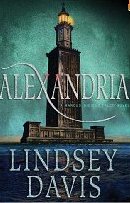 Who killed Theon, the head librarian at the great library in Alexandria? Are scrolls missing? Are they being stolen, destroyed, recycled, and mismanaged or just suffering from benign neglect? Read about life in the great reading room of the greatest library in the world in A.D. 77.
Who killed Theon, the head librarian at the great library in Alexandria? Are scrolls missing? Are they being stolen, destroyed, recycled, and mismanaged or just suffering from benign neglect? Read about life in the great reading room of the greatest library in the world in A.D. 77.
This is a historical mystery written by Lindsey Davis entitled Alexandria. It is the 19th book in a series featuring Marcus Didius Falco and the nefarious goings-on in the roman world of the Emperor Vaspasian. The novel is witty and fast paced and full of details of bookkeeping in every sense of that term.
St. Martin's Press published Alexandria in the US in May 2009.
Bibliophiles might like this quote:
In this novel Ptolemy's glorious ideal has become tattered and frayed and mischief is afoot. I recommend it highly.
KRAUSE DISCOUNTS STANDARD CATALOG CD SETS
Ultimate Standard Catalog of World Coins 5-CD Set (1600-Present)
By George S. Cuhaj and Thomas Michael
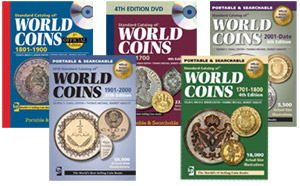
What's better than being able to get Standard Catalog of Worlds Coin in book or CD/DVD? How about having all of the current editions in one 5-CD set you can use anywhere there's a computer.
With the Ultimate Standard Catalog of World Coins 5-CD Set you get comprehensive and current prices, photos and listings for world coins from 1600 to the present. All in one set, for only $99.99. That's a savings of 49% on the regular price and 40% Off the ShopNumisMaster.com price, if you were to buy each CD separately.
To order from the NumisMaster web site, see: Ultimate Standard Catalog of World Coins 5-CD Set (1600-Present)
Standard Catalog of World Paper Money 2-CD Set (1368-Present)
By George Cuhaj and Thomas Michael
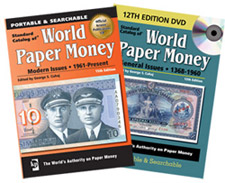
Now you can access pricing, photos and descriptions for all types of paper money, issued by every country, since 1368, in the Standard Catalog of World Paper Money 2-CD set.
This two-pack of the current CDs in the Standard Catalog paper money series, gives you the most comprehensive collection of identification and pricing data for notes that you'll find anywhere. Plus, this is a great way to have your best paper money references on hand whether you're at home, or away.
To order from the NumisMaster web site, see: Standard Catalog of World Paper Money 2-CD Set (1368-Present)
THE BOOK BAZARRE
ORIGINAL RED AND BLUE BOOK SHOP DUMMIES TO BE EXHIBITED
There are pieces of numismatic history that are rare, and then there are those that are truly one-of-a-kind.
Three such pieces of the early days of coin collecting will be coming out of the Whitman Publishing archives and to the Bourse for the Whitman Coin & Collectibles Philadelphia Expo. They are:
* The Original Shop Dummy of the first edition of the "Red Book" (the Guide Book of United States Coins), published in 1946. Don't let the blue color fool you. This is a rare behind-the-scenes glimpse of the making of the book that to this day is the hobby's best-selling guide book, complete with vellum hand-lettered cover sketch.
* Before there was the Red Book, there was the "Blue Book," published beginning in 1942. The Original Shop Dummy of the first edition of the Blue Book, including penciled notes and pasted-in content, let's you peer even further back to the earliest origins of the original handbook of U.S. Coins.
* An Antique Whitman Publishing Printing Plate, used to print one of Whitman's game-changing coin boards, in this case "Barber or Liberty Head Half Dollar Collection No. 2." Whitman began making coin boards in the 1930s, followed by coin folders in 1940. This innovation made it easy to collect and display coins from pocket change and helped usher in the Great Depression era's popular craze for coin collecting.

Original Shop Dummy of the first ever "Red Book"
To read the complete article, see:
Original Red Book Shop Dummy To Be Exhibited At Philly Expo
(whitmancoincollecting.com/content/original-red-book
-shop-dummy-to-be-exhibited-at-philly-expo/)
JOHN REICH COLLECTORS SOCIETY E-NEWSLETTER HAS NEW EDITOR
"Richard Meaney is taking over duties as the editor of the e-newsletter of the John Reich Collectors Society (JRCS). The newsletter also has a new email address: jrnewsletter@gmail.com. If you wish to subscribe to the newsletter, send an email to Richard at jrnewsletter@gmail.com and ask to be subscribed. Ensure that your spam filter allows incoming messages from jrnewsletter@gmail.com so you do not miss any issues."
MEDAL EXHIBITION OPENS AT BELSKIE MUSEUM
 A steady stream of museum visitors trekked into the one-story building next to the Closter New Jersey Public Library Sunday, September 13th, as a dual exhibition of international medals -- a part of the FIDEM exhibition which had been traveling to a number of American venues -- in addition to an extensive exhibit of the medallic work of the museum's namesake, sculptor-medallist Abram Belskie.
A steady stream of museum visitors trekked into the one-story building next to the Closter New Jersey Public Library Sunday, September 13th, as a dual exhibition of international medals -- a part of the FIDEM exhibition which had been traveling to a number of American venues -- in addition to an extensive exhibit of the medallic work of the museum's namesake, sculptor-medallist Abram Belskie.
 Medal collectors were there in strong numbers, interspersed with sculptors, museum & municipal officials, neighbors and just plain folk. Closter's mayor even made an appearance. It was a pleasure to see again Donald Scarinci, whose medal interest is boundless, and who just had given a speech two days before at the New York Numismatic Club.
Medal collectors were there in strong numbers, interspersed with sculptors, museum & municipal officials, neighbors and just plain folk. Closter's mayor even made an appearance. It was a pleasure to see again Donald Scarinci, whose medal interest is boundless, and who just had given a speech two days before at the New York Numismatic Club.
Representatives from both the Northern New Jersey Numismatic Club and the Garden State Numismatic Association were present. It was another pleasure to see again James K. Brandt, a longtime friend of many decades and his guests. I met for the first time Paul Turdo and his wife with whom we discussed the medallic works of another Closter medallist, Joseph Di Lorenzo, whose medallic works he had in his collection.
Several sculptor members of the American Medallic Sculpture Association were present. Jacqueline Lorieo and Karen Worth were among the sculptors in attendance.
A pamphlet was available for everyone who attended. Originally commissioned to write a leaflet for the exhibition, I wrote on how Abram Belskie created his medals and a timeline of his life. It was amplified with illustrations from the photographs on file at the Belskie. Much of the pamphlet was the work of Anita Duquette, a volunteer at the Belskie and a full-time employee of a New York City museum.
It was a distinct pleasure to see again Myron Lewis, president of the Belskie Museum, who had just returned from a long-time hospital stay. Stay well, Mike. (I have a warm spot for this energetic official -- he named me as the museum's curator of numismatics).
The exhibit continues through November 15th and further details can be found at the museum's web site: www.belskiemuseum.com
I have extra copies of the pamphlet "Abram Belskie Numismatics: The Art of Coins and Medals." Contact me at: dick.johnson@snet.net
DID MAN'S LETTER DRIVE MINT TO PROTECT STANDING LIBERTY QUARTER DATE?
Bibliophiles generally appreciate what goes into researching the books they love. Here's a recent example of how a specific letter was located.
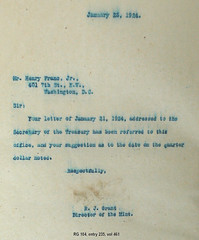 Several weeks ago I found an unusual letter during a page-by-page search of press copy books [RG 104, entry 235, vol 461] in the U.S. Mint archives at NARA, College Park MD. It was a simple reply to Henry Franc, Jr. of Washington DC acknowledging his suggestion about the date on the Standing Liberty quarter. Buried among thousands of pages for 1924, the letter got my attention because I had seen nothing in the archives dated this early referring to the date on the quarter.
Several weeks ago I found an unusual letter during a page-by-page search of press copy books [RG 104, entry 235, vol 461] in the U.S. Mint archives at NARA, College Park MD. It was a simple reply to Henry Franc, Jr. of Washington DC acknowledging his suggestion about the date on the Standing Liberty quarter. Buried among thousands of pages for 1924, the letter got my attention because I had seen nothing in the archives dated this early referring to the date on the quarter.
By itself, the letter said little, but it indicated that Mr. Franc had made some sort of specific suggestion relating to the coin's date. I knew that from 1916-1924 the date was exposed to abrasion and that many quarters from this period were dateless, although otherwise in collectable condition. Beginning in 1925 the date area was recessed so the digits were protected.
Curious, I decided to look for Mr. Franc's original letter. The mint's reply included a few clues: it was dated January 11, 1924; it was sent to Secretary of the Treasury Mellon; and it had been forwarded to the mint director for disposition. These clues told me that the original was likely in the mint's "Letters Received" files. This would be Record Group 104, entry 229 – somewhere in three hundred eighty-five boxes of correspondence!
Whenever I visit an archive, I list the content of each volume, box and folder accessed. Over time, the list has grown to become a valuable index that helps find specific materials. A check of this list showed that letters for 1915-1925 were filed alphabetically by year, not by date received as were most earlier documents. The list showed that box 311 covered letters received with senders' names beginning with "F" during 1924.
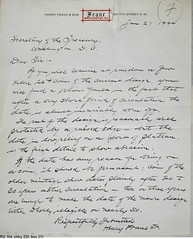 On my next visit to NARA, the staff pulled the requested box plus a couple adjacent ones in case the letter had been misfiled. Within five minutes of opening the box, I'd located Mr. Franc's original letter filed with a carbon of the reply.
On my next visit to NARA, the staff pulled the requested box plus a couple adjacent ones in case the letter had been misfiled. Within five minutes of opening the box, I'd located Mr. Franc's original letter filed with a carbon of the reply.
The letter and mint reply combined with the mint's change of the quarter's date (and only the date), suggest that Henry Franc's letter might have started the "ball rolling." Obviously, this is just a theory until confirmation can be located. However, this is the first documentary indication of why the quarter's date was changed for 1925.
Of greater significant is what this little anecdote indicates: there is much to be discovered in the archives if we care to look for it.
Secretary of the Treasury:
Washington, DC.
Dear Sir:
If you will examine at random a few silver 25¢ coins of the current design, you will find a serious fault in the fact that after a very short period of circulation the date is almost invariably worn off. The rest of the design is reasonably well protected by a raised edge – but the date, in low relief on a sort of plateau, is the first detail to show abrasion. If the date has any reason for being on a coin, it should be permanent: coins of the older mintage show dates plainly after 20 to 30 years active circulation – two or three years are enough to make the date on the newer design either wholly illegible or nearly so.
Respectfully submitted,
Henry Franc, Jr.
THE BOOK BAZARRE
E-SYLUM MAILING NOTES
Several readers reported not getting their issue last week. Often there's a common thread (AOL subscribers, for example), but not this time. I've confirmed that their addresses are still on the list, but sometime problems occur. Sometimes the email ends up in a spam folder. Some folks have switched to using a Gmail account, and that has had some success.
Another way to get your weekly E-Sylum fix is on the Numismatic Bibliomania Society web site. Each issue is archived there in full shortly after publication. Bookmark this page: The E-Sylum eNewsletter Archive (www.coinbooks.org/club_nbs_esylum_archive.html)
Another thing that may be happening to some people is that their subscription could be getting disabled due to excessive bounces. A "bounce" is when an email message is sent to your account, but somehow doesn't get thru. A "bounce" message bounced back to the sender, in this case our email list provider, Binhost.
In recent weeks I've been getting bounce notifications myself. Example:
Your membership in the mailing list Esylum has been disabled due to excessive bounces The last bounce received from you was dated 30-Aug-2009. You will not get any more messages from this list until you re-enable your membership.
So I wrote to Binhost support:
I've been getting these confirmation email messages, but every time I try to confirm (either by clicking the link or replying by email) I get told the confirmation string is outdated. But it shouldn't be - I always respond promptly. What's happening?
Binhost support writes:
This is a known bug -- the links don't work, but if you log into your membership page, you can confirm that way. We know about this and are working on it, but have not yet solved it.
So bear with us if you'd been getting these. Email me if you have problems and I can refer you to Binhost support if needed. Thanks, everyone.
GOOGLE ACQUIRES RECAPTCHA TO POWER BOOK SCANNING
Google has acquired reCAPTCHA, an open source technology that provides CAPTCHAs to prevent spam and fraud. Captchas are those security questions you find on Web sites that require you to decipher and type words or numbers and detects whether the user is a human.
Here's what Google wrote in a blog post about the announcement:
CAPTCHAs are designed to allow humans in but prevent malicious programs from scalping tickets or obtain millions of email accounts for spamming. But there's a twist — the words in many of the CAPTCHAs provided by reCAPTCHA come from scanned archival newspapers and old books. Computers find it hard to recognize these words because the ink and paper have degraded over time, but by typing them in as a CAPTCHA, crowds teach computers to read the scanned text.
Google says that reCAPTCHA's technology improves the process that converts scanned images into plain text, known as Optical Character Recognition (OCR). It sounds like Google will be using the technology to power massive scanning projects for Google Books and Google News Archive Search as well as for fraud and spam prevention.
In May, the New York Times reported that Google was developing their own type of captcha and also took notice of the potential of reCAPTCHA's technology. Sounds like Google found it more effective to acquire reCAPTCHA's technology instead of reinventing the wheel.
To read the complete article, see: Google Acquires reCaptcha To Power Scanning For Google Books And Google News (www.techcrunch.com/2009/09/16/google-acquires-recaptcha-to-power-scanning-for-google-books-and-google-news/)
THE BOOK BAZARRE
QUERY: R. M. SMYTHE AUCTION #199 PRICES REALIZED SOUGHT
Dennis Schafluetzel writes:
I am looking for someone who has a prices realized sheet for the R. M. Smythe Auction #199 (6/19/1998). I have the catalog but no prices. I am using it to add historical prices for rare / seldom offered Tennessee scrip for Tom Carson and my planned book on Tennessee obsolete currency. I would like to have a scan of the prices realized (pdf). Thanks.
QUERY: STATUS OF THE NUMISMATIC INDEX OF PERIODICALS
Ben Keele writes:
Does anyone happen to know the status of the Numismatic Index of Periodicals (http://www.harrybassfoundation.org/search_numlit.asp)? It appears to have not been updated for nearly three years. Does anyone know who is responsible for it?
In 2006 I had been in touch with Lane Brunner at the American Numismatic Association and he told me Ed Deane at the Harry Bass Foundation was working on the NIP index software. But I don't know the status of this project today. It's a very worthwhile one. Harry Bass started the effort and by the time of his death the NIP index had pretty good coverage of U.S. numismatic periodicals.
John Nebel and I designed and built a mechanism intended to help automate the entry of E-Sylum entries into the NIP index. Each week an email message is generated with the contents of each E-Sylum issue. The email could be sent to a program to automatically update the NIP index, or in the interim, to the human who updates it by hand. But that email still isn't being used.
Librarians and researchers note - if you'd like to receive these emails, let us know. -Editor
MORE ON COUNTERMARK VS. COUNTERSTAMP
The attempt to differentiate "countermark" and "counterstamp" -- as mentioned in last week's E-Sylum -- by who did the counterstamping and their intent is not always obvious, particularly when all the evidence you may have at hand is the host item so marked.
Could we be doing the numismatic field a disservice by trying to append too precise a meaning to each of these terms? In the broadest sense they both mean the same.
By creating a definition different for each will require numismatic writers forever wondering if they are using the correct term. It reminds me of the situation of "legend" and "inscription" where legend is the lettering following around the perimeter of the coin, medal or token, and inscription is all other lettering.
I cite no less an authority than N. Neil Harris, when he was editor of The Numismatist, who once told me "I have to check the correct definition every time either one is used."
By creating different meanings for each of the "counter" terms will lead to the same bewilderment by all future numismatic writers.
A countermark or -stamp was first used in 41 BC on a Persian coin (it was punchmarked with an Aramaic letter heth). Numismatists do not know who did this or why. The intent obviously remains unknown. They speculate it was a banker using a punch much like the Chinese applying "chop marks." Thus a literate numismatist could not apply either term as recommended in the terms defined in last week's E-Sylum.
Numismatists should be less concerned with defining countermarks / counterstamps and more concerned with the correct use of terms associated with these terms. To wit:
Host -- the existing numismatic item -- coin, medal or token -- so marked with a punch.
Punch -- a small tool used by hand to impress letters, figures or a design element into the surface of a host numismatic item. When position properly it is tapped with a light hammer to impress the image. It may also be called a "puncheon."
Logotype -- a punch of two or more letters or figures on the same shank that are impressed entire with one blow to the punch.
Shank -- the stem of the punch; it usually has four sides to aid in aligning the lettering, it is "squared up" in aligning all lettering.
Alignment -- maintaining proper vertical and horizontal perspective of all lettering by the use of a base line.
Base Line -- a line -- real or imaginary -- serving as a base for lettering of two or more characters to rest on. An actual line may be inscribed (later removed) or drawn on a surface. The line may be straight, bowed or undulate. If crudely executed the counterstamped letters may appear tilted as if the base line was nonexistent. Base lines are obviously employed when engraving a die in addition to counterstamping.
Chop Mark -- a punchmark indicating acceptability, fineness and weight by a banker in the Orient, usually of large silver coins.
Punchmark -- Same meaning as countermark and counterstamp.
To read the earlier E-Sylum articles, see:
COUNTERMARK VS COUNTERSTAMP (July 30, 2000)
(www.coinbooks.org/esylum_v03n31a07.html)
VOCABULARY QUERY: COUNTERSTAMP AND COUNTERMARK (September 6, 2009)
(www.coinbooks.org/esylum_v12n36a16.html)
VOCABULARY WORDS: COUNTERSTAMP AND COUNTERMARK (September 13, 2009)
(www.coinbooks.org/esylum_v12n37a11.html)
MORE ON COINS PICTURED ON COINS
Yossi Dotan writes:
You requested to see examples of coins pictured within a coin or banknote. Here is my ten zlotych worth as contribution to the presentation.
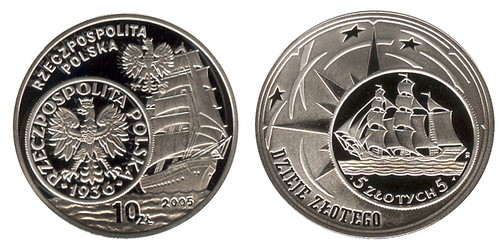
The coin, issued by Poland in 2005, honors the history of the zloty by featuring both sides of the 5-zlotych coin of 1936—the obverse on the obverse and the reverse on the reverse. The reverse of the 1936 coin shows the training ship "Dar Pomorza" from a full port broadside view. The obverse of the 2005 coin gives a starboard bow view of the ship.
While there are quite a few coins that depict another coin, I cannot recall another instance in which both sides of that other coin are depicted.
MORE ON THE U.S. SHIP/FRIGATE CONSTITUTION
Russ Sears writes:
I just noted the information from Jim Wells.
The medal I was researching is one of two different medals struck in 1972. One was the 1 5/16" U. S. Mint struck medal, most of which are silver. The design was also struck in 3" bronze and silver. That is not the medal we illustrated.
The medal Jim is referring to is one which, as noted, was struck containing copper from the original spikes from the ship. It was in the late 1950's that this medal was first sold to raise money for restoration of the 1797 U. S. F. Constellation. A small number (amounts lost to history) were struck with serial number in copper as well as serial numbered silver or pewter finish and gold finish.
Our medals pictured in The E-Sylum are neither of the two above.
In more recent years, it was determined that the Constellation is not the 1797 ship build at Stoddard's Shipyard at Harris Creek, Canton, Baltimore, Maryland. The ship in Baltimore harbor was built in the 1850's. So, our ship in Baltimore is the U. S. S. Constellation, not U. S. F. Constellation.
Max Speigel writes:
As far as I know the USS Constellation medals made from copper from the ship entitled the possessor to free admission to the ship, which is now docked in Baltimore's Inner Harbor. I have heard that they will still let you enter for free if you show them one of the medals, but I have not tried it myself so I cannot say whether this is true.
To read the earlier E-Sylum articles, see:
BILL FIVAZ AND THE U. S. FRIGATE CONSTELLATION MEDALS
(www.coinbooks.org/esylum_v12n37a22.html)
THE U. S. FRIGATE CONSTELLATION MEDALS
(www.coinbooks.org/esylum_v12n36a22.html)
MORE ON THE ELLA QUINN GOLD COIN HOARD
The "Gold in a Barrel" story appears with same wording in newspapers from Fort Wayne, Indiana (April 20, 1900), Richfield Springs, NY (April 20 or 26, 1900) and Eau Claire, Wisconsin (June 21, 1900). I did not see it in Philadelphia Inquirer.
Each story says Ella Quinn (or Mrs. Ella W. Quinn) of North Philadelphia, died 2 days ago. John Quinn, 6 years old, of Trenton inherits…
I believe most of the details of this story are wrong. The key is the Bridgton, NJ byline – which leads me to believe the story is about THIS Ellen Quinn:
Ellen Quinn, age 68, died April 3, 1900, at her residence, 614 South 7th St., 4th Ward, Philadelphia. Funeral St. Paul's Church. Burial Cathedral Cemetery. She was born in Ireland and emigrated before 1860.
Ellen was the widow of Dennis Quinn (born Ireland 1833 – died May 31,1889, Philadelphia , also 614 South 7th St.). They had lived at same address at least since 1870. The family lived above their place of business. [building may still exist].
Dennis Quinn was a saloon keeper. He (and others) had many battles over renewing license to sell liquor. There was anti-saloon feeling in the city. This is reported in his obituary – the troubles hastened his death from "brain fever." He was a stout, hearty man, well-liked, who lost his will to live. "He and his wife had intended to start a pleasure trip when his license was not renewed. They had saved a small fortune between $50,000 and $75,000."
The son, John A. Quinn (born 1860, PA), was bartender at father's tavern and had similar problems with liquor license renewal in 1890's – 1900's, despite being elected a Philadelphia City Councilman in 1903.
Ellen Quinn wrote her will Nov. 13, 1891. It was probated April 20, 1900, in Philadelphia. She leaves "the half of the double house and lot of land on East Avenue, in the City of Bridgeton, New Jersey, purchased by me of Aaron Smith." Various bequests, but most to son, John A. Quinn, who is executor.
John A. Quinn has a son, John, Jr., who was born Sept. 18, 1895, so he would be right age for the 6-year-old mentioned in newspaper stories. There are four other children – why is he singled out? (JA Quinn's wife and children were all born in New Jersey).
Ellen Quinn died before the 1900 census enumeration. Interestingly, the James A. Quinn family is enumerated twice [happens sometimes] in 1900 – living both at 614 South 7th St, Philadelphia and 143 East Avenue, Bridgeton, Cumberland County, NJ. [it is same family! Same names, birth months, etc.]. John A. Quinn, age 39, is listed as "retired." In 1910 census, John A. Quinn family still living 143 East Ave., Bridgeton, NJ. He is "retired."
By the 1920 census, John A. Quinn has died. His widow and children are living same house; but they do not seem to be that rich – daughter: stenographer, machine shop; son: time keeper, ship yard; son: salesman, grocery store.
In the 1930 Census, the Quinn family still living in the East Avenue house, Bridgeton, NJ.
To read the earlier E-Sylum article, see: MYSTERIOUS LEDGER SIX NINE FOUR: THE ELLA QUINN HOARD (www.coinbooks.org/esylum_v12n37a20.html)
QUERY: GRATIANUS SOLIDUS FROM THE LYONS MINT
In 2007, I acquired a very rare Gratianus Solidus from the Lugdunum (Lyons) Mint. At the time it was believed that there were only two known specimens, the ones described and illustrated by Pierre Bastien in "Le Monnayage de l'Atelier de Lyon (363-413)" and his subsequent volume "Le Monnayage de l'Atelier de Lyon (43 AV. J.-C. - 413 APR J.-C.), Supplément II". He assigned No. 58 to the specimen at Cabinet des Médailles de la Bibliothèque nationale de France (BnF) in Paris, and No. 58b to the specimen I acquired.
While searching for more information on my new acquisition, I found out that Georges Depeyrot also cited two specimens, the one at the BnF, and one supposedly from the Dresden Museum for which he gave no information (and which led to speculation about its existence). These are cited in "Les Monnaie d'Or de Constantin II à Zénon (337-491)", and in L'Or du Bas-Empire, Inventaire Justificatif des Tomes 1 et 2".
Intrigued about the possible existence of a third specimen, I decided to contact the Dresden Museum (Münzkabinett, Staatliche Kunstsammlungen Dresden) to verify that a Gratian solidus from the Lyon Mint was in fact in their possession. Wilhelm Hollstein graciously provided details and pictures of their specimen. It will be published in Bastien's Supplèment III, which is due to come out in 2010.
The three specimens were featured on page 168 of the October 2008 issue of the Bulletin de la Société Française de Numismatique (BSFN). I have attached an English translation of the article I wrote, which gives background information and details of these specimens.
If anyone has, or knows about, another specimen of this extremely rare solidus from the Lyon Mint, I would be very happy to have details and pictures sent to pdehenaut@peoplepc.com.
The Unique Gratian Solidus from the Lugdunum (Lyon) Mint by de Hénaut, Philippe
Introduction
Flavius Gratianus was born in AD359 in Sirmium in the roman province of Pannonia. He was elevated by his father to the title of Augustus at the age of eight, the first emperor's son to be thus elevated without first receiving the title of Caesar. In commemoration of this great event, as well as the concurrent quinquennalia of his father Valentinian I and his uncle Valens, the Lugdunum Mint issued in AD368 the only known type of solidus for Gratian to come from that mint. To date only three specimens are known to exist, one of which is unpublished.
The glory of a new century
With this exceptional issue, the hope of a new century is placed upon Gratian with the unusual reverse legend GLORIA NOVI SAECVLI, and ties him to the secular mysticism of the empire. The representation of Victory atop the labarum is particularly interesting, and confirms that the Christian emblem dispenses military successes to the Augusti. The equally unusual title AVGG AVG on the obverse has led former numismatists (notably A. Banduri and J. Eckhel, among others) to speculate as to its meaning, giving rise to diverse interpretations. Because of Gratien's young age at the time, he was not placed on equal footing with his co-regents, leading the mints at Lyon and Arles to characterize this inferiority by the expression Augustorum Augustus (loosely translated as Augustus born of Augusti).
The known specimens
The obverse and reverse legends are identical on each of the three known specimens, as shown in the table below. The busts and devices are more or less similar (see Figures below).
Obverse
| Legend: D N GRATIAN - VS AVGG AVG |
| Reading: Dominus Noster Gratianus Augustorum Augustus |
| Translation: Our Lord Gratian Augustus of Augusti |
| Description: Diademed (pearls), draped, and cuirassed bust of Gratian facing right |
Reverse
| Legend: GLORIA NO - VI SAECVLI/ -/-//LVG |
| Reading: Gloria Novi Sæculi // Lugdunum |
| Translation: The glory of a new century // Lyon |
| Description: The emperor standing, facing forward, head turned left, in military garb, holding in his right hand a globe upon which stands a Victory facing right, holding in his left hand a labarum upon which is a Victory facing left, both Victories holding a crown over Gratian's head. |
Two of the specimens were described and illustrated by Pierre Bastien. He assigned No. 58 to the specimen at Cabinet des Médailles de la Bibliothèque nationale de France (BnF) in Paris (Fig. 1), and No. 58b to the specimen currently in a private collection (Fig. 2). Georges Depeyrot also cited two specimens, the one at the BnF, and one supposedly from the Dresden Museum for which he gave no information, and which led to speculation about its existence. Communications were established between the author and the Dresden Museum (Münzkabinett, Staatliche Kunstsammlungen Dresden) in January 2008 for the purpose of verifying that a Gratian solidus from the Lyon Mint was in fact in their possession. Wilhelm Hollstein graciously provided details and pictures of their specimen (Fig. 3). By the same token, Dominique Hollard of the BnF was equally agreeable to provide details and pictures of their specimen.
For the three known solidi there are three obverse dies and two reverse dies (The BnF specimen and the private collection specimen are from the same reverse die). The BnF specimen seems to have suffered an ancient blow from a spade or other agricultural implement according to Dominique Hollard. The Dresden specimen was possibly pierced and mounted as jewelry. The provenance of either of these two specimens is unknown. The private collection specimen came from Alain Baron's Numismatica Genevensis 1 sale of 27 November 2000, No. 178, via the Compas collection. Other details of each specimen follows:
| Repository/Number | mm | Axis | g | Bastien References |
| BnF No. 1959 | 21.5 | 6h | 4.48 | No. 58, pg. 199, pl. VI |
| Dresden No. 335 | 19.9 | 12h | 4.19 | Unpublished. Will be in Supplèment III |
| Private collection | 20.5 | 6h | 4.52 | No. 58b, Supp. II, pg. 147, pl. XL |
If anyone has another specimen of this extremely rare solidus from the Lyon Mint, the author would be very happy to have details and pictures sent to pdehenaut@peoplepc.com.
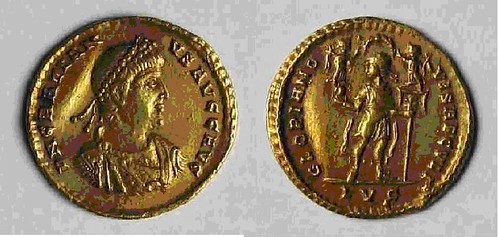
Fig. 1 - Specimen from the Cabinet des Médailles
de la Bibliothèque nationale de France, © BnF
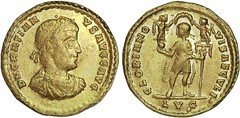
Figure 2 - Specimen from a private collection, © CGB
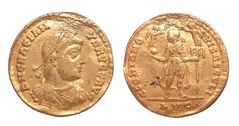
Figure 3 - Specimen from Münzkabinett,
Staatliche Kunstsammlungen Dresden, © Dresen
NEW YORK TIMES ARTICLE ON IZZY SWITT'S 1933 DOUBLE EAGLES
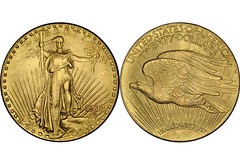 Roy Langbord had guessed that someone in his family might have hidden away a great treasure decades before, but not until his mother had him check a long-neglected safe-deposit box did he realize just how great it was.
Roy Langbord had guessed that someone in his family might have hidden away a great treasure decades before, but not until his mother had him check a long-neglected safe-deposit box did he realize just how great it was.
Inside the box, opened in 2003, he found an incredibly rare coin, wrapped in a delicate paper sleeve. It was a gold $20 piece with Lady Liberty on one side, a bald eagle flying across the other and, at Liberty's left, the four digits that made it so valuable: 1933.
The famous "double eagles" from that year were never officially released by the government. Only a few had ever made their way out of federal vaults, and only one had ever been sold publicly, in 2002. The price: $7.6 million.
And there were nine more of them in the safe-deposit box.
But after the Langbord family took the coins to the United States Mint to be authenticated in 2004, they got a rude surprise. The Mint said the coins were genuine and kept them.
The government claims that they are government property stolen from the Mint, most likely in the 1930s, by Mr. Langbord's grandfather, Israel Switt, a Philadelphia jewelry dealer.
The Langbords went to court and recently won an important ruling. A United States District Court judge has given the government until the end of the month either to give back the coins or go back to court to prove that they were in fact stolen by Mr. Switt, a daunting task after three-quarters of a century.
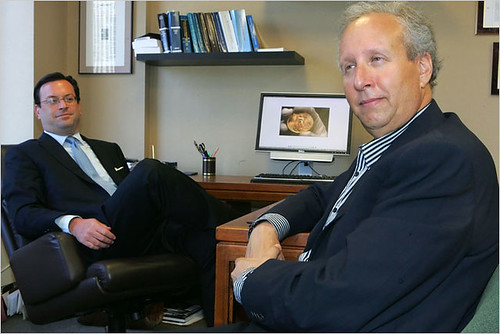
Roy Langbord, right, and his lawyer Barry H. Berke
Mr. Langbord, an entertainment industry executive, said he first learned about his family's involvement with the storied coins in 2002 on a flight to Las Vegas, when he read an account of the Farouk coin's odyssey in an advertisement for the auction. He was stunned, he said, to see that the dealer who first procured the coin was his grandfather. When Mr. Langbord got off the plane, he said, he called his mother, Joan Langbord, and asked, "Do we have any more of these?" About a year later, the search turned up the safe-deposit box in Philadelphia.
The Secret Service, which polices currency crimes, has argued that all of the double eagles that escaped government control passed through the hands of Mr. Switt, working with a corrupt cashier at the Mint. A Mint spokesman declined to comment on the case because of the litigation.
According to a history of the coins by Alison Frankel, a journalist with The American Lawyer, a United States attorney decided not to prosecute Mr. Switt in the mid-1940s, saying the statute of limitations had passed.
Ms. Frankel wrote in her 2006 book "Double Eagle: The Epic Story of the World's Most Valuable Coin" that Mr. Switt was "a thoroughly nasty piece of work," and that a dealer who traded with him called him a "gold coin bootlegger" who continued to sell gold coins long after the practice had been prohibited. The book details the government's contention that Mr. Switt worked with a corrupt Mint cashier.
Mr. Berke counters such arguments by quoting the Secret Service report on the coins, which explicitly admitted that its investigation "did not conclusively establish when, how or by whom the coins found in circulation were taken from the Philadelphia Mint."
The Langbords insist that Mr. Switt, who died in 1990, acquired the coins legitimately before the ban, most likely through a gold-for-gold exchange process used by the Mint in those days.
In an interview, Ms. Frankel called Mr. Berke's success in persuading the judge to shift the burden of proof onto the government in the case "quite an amazing accomplishment" that forces the government "to prove a negative — that the coins could not have gotten out legally."
Armen Vartian, the general counsel of the Professional Numismatists Guild, agreed. "Nobody can prove conclusively what happened," Mr. Vartian said. "Anybody who has to do that, I think, is going to fail."
To read the complete article, see: Rare Coins: Family Treasure or Ill-Gotten Goods? (http://www.nytimes.com/2009/09/16/us/16coin.html)
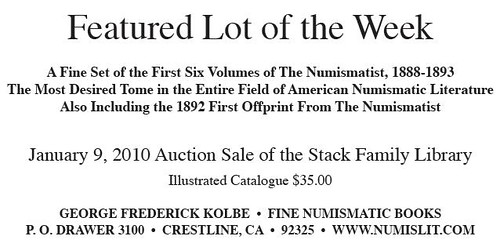
HERITAGE AUCTION GALLERIES SUED - SHILL BIDDING ALLEGED
Heritage Auction Galleries, is being sued by a former employee alleging that Heritage executives perpetuated a "massive auction scam." The lawsuit charges that the Heritage used an undisclosed shill bidder at auctions to inflate the price. Co-defendants of the suit include Heritage executives Gregory J. Rohan, Steve Ivy, James L. Halperin, Marc D. Emory, Paul R. Minshull, and Dagmar Byers.
Filed on May 22, the suit alleges that Heritage and its executives violated the Racketeer Influenced and Corrupt Organizations Act (RICO, Title 18, Chapter 96), and the Texas Pawn Shop Act [PDF].
The suit was brought by Gary Hendershott, an alleged expert in Civil War memorabilia and was recently joined by Montana businessman Chris Kortlander. Kortlander claims to have "consigned thousands of individual historical manuscripts and photographs to Heritage," and claims to have been deprived of profits because of the use of the shill bidder.
Along with Kortlander's claim, Hendershott claims he is owed $1.6 million for commissions on auction sales. Part of the sale includes two paintings purchased by a trust Hendershott was working with. A judge ordered that sale be arbitrated after the filing of suits and countersuits.
So let me see if I understand this lawsuit. Kortlander is suing Heritage because they use a shill bidder to increase the hammer price to levels higher than if the shill was not participating and Kortlander claims he was deprived of profits? What would the profits have been if the shill was not bidding on the auction? Would the same prices have been realized?
With Hendershott's attorney Mark Senter being accused of rewriting the suit with "salacious headlines," the filing reads like one of a disgruntled employee and his attorney looking for attention to force Heritage to settle rather than experience the negative press.
One could only wonder what Judge Judy would say!
To read the original blog post, see: Heritage Accused of Racketeering (coinsblog.blogspot.com/2009/09/heritage-accused-of-racketeering.html)
NATIONAL GOLD EXCHANGE CREDITOR DISPUTES BANKRUPTCY PLAN
An attorney for Sovereign Bank, the major secured creditor of National Gold Exchange, blasted a financial disclosure statement filed with the Tampa coin dealer's proposed Chapter 11 bankruptcy reorganization plan.
Robert Soriano, a shareholder in Greenberg Traurig's local office, called the statement "pie in the sky numbers on a piece of paper."
Sovereign contends NGE owes it nearly $35 million on loans. After liquidating some rare music machines owned by Mark Yaffe, NGE's vice president and treasurer, and part of the coin inventory, the company wants to make monthly payments to the bank over six years.
The bank objects to that, especially since NGE receivables reported to the bank are "bogus" and the coin inventory collateral that was supposed to be worth $26 million is not, Soriano said, questioning the source of money for the proposed monthly payments.
"There's nothing in the disclosure statement to indicate where that's coming from," he said. "There's no evidence it's feasible. The plan doesn't make any sense."
Soriano argued that the bank's investigation into the company showed $232 million flowed through the business in 12 months, yet with all this cash it showed little in receivables.
"There's hundreds of millions of dollars not accounted for," he said, contending the solution is a quick and orderly liquidation of assets then pursuit of accounts receivables and possible lawsuits. "We don't think it was a legitimate company."
To read the complete article, see: Lead creditor lambastes NGE's gameplan (tampabay.bizjournals.com/tampabay/stories/2009/09/14/daily35.html)
To read an earlier E-Sylum article, see: BANKRUPT COIN DEALER NATIONAL GOLD EXCHANGE SHUTS DOWN (http://www.coinbooks.org/esylum_v12n31a30.html)
ODYSSEY MARINE REACHES AGREEMENT WITH BRITISH GOVERNMENT
Florida deep-sea explorers said Friday that they will work with the British government to salvage artifacts from centuries-old shipwreck of a heavily armed vessel, and the company may continue to make money under the agreement.
Tampa-based Odyssey Marine Exploration announced it was giving up its legal claim as part of the agreement with the British government regarding the wreck of the HMS Victory, a 100-gun man-of-war that sank in the English Channel in 1744.
Odyssey CEO Greg Stemm said Friday that the company's legal claim filed in U.S. District Court in Tampa has been dismissed, and the company will now work closely with the British government on salvaging the wreck, which is believed to include 4 tons of gold coins.
The British government has taken possession of two brass cannons Odyssey has already raised from the wreck in exchange for a salvage award of $160,000.
Odyssey, which in 2007 hauled up an estimated $500 million in silver coins from a Spanish shipwreck, said it discovered the remains of the British vessel last year in about 330 feet of water and has worked closely with the British government on how salvage and preservation should proceed.
Stemm said in the statement that Odyssey donated $75,000 of its salvage award to help the National Museum of the Royal Navy preserve the Victory wreck.
Odyssey's relations with the Spanish government have not been so cordial. The company has been locked in a legal tug-of-war with Spain for more than two years over the vast treasure raised from what is believed to be the galleon Nuestra Senora de las Mercedes y las Animas.
To read the complete article, see: Fla. explorers, UK reach agreement on shipwreck (news.yahoo.com/s/ap/20090918/ap_on_re_us/us_shipwreck_discovery)
DICKIN MEDAL-WINNING PIGEON PADDY HONORED WITH PLAQUE
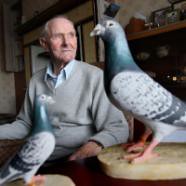 A war hero decorated for his bravery in the fight against Hitler is finally being honoured by his home town, 55 years after his death.
A war hero decorated for his bravery in the fight against Hitler is finally being honoured by his home town, 55 years after his death.
Paddy the pigeon was the first bird make it back to England with vital news from the D-Day Normandy landings in June 1944.
His exploits of derring-do, avoiding deadly German falcons released to catch the airborne messengers, and making it back across the Channel, earned Paddy the Dickin Medal, the animal equivalent of the Victoria Cross.
The citation on his medal said: "For the best recorded time with a message from the Normandy Operations, while serving with the RAF in June, 1944."
After the war the heroic bird returned to its home at Carnlough on Northern Ireland's Co Antrim with owner Captain Andrew Hughes where he lived on until dying in 1954 at the ripe old age of 11. He was immortalised in an illustrated children's book Paddy the Pigeon by Gail Seekamp in 2003 - now finally his home town is going to recognise him.
A plaque is being unveiled on the harbour wall in Carnlough on Saturday by the well-known veteran pigeon breeder John McMullan who trained Paddy and was a friend of Captain Hughes. Mr McMullan, who still lives in Carnlough, said: "I agree with this wholeheartedly. Paddy was the only pigeon from Ireland to win the Dickin Medal.
"It is only right the plaque is put up, it is just a pity they didn't do it earlier."
"Paddy was the last pigeon to be let go by the Americans in Normandy and he was the first one home. He was the best of the lot, the best of thousands," said Mr McMullan.
To read the complete article, see:
Brave wartime pigeon Paddy honoured
(www.google.com/hostednews/ukpress/article/
ALeqM5hFchDvU2XyAAwoX3FIptA287myyQ)
THE 1900 THEFT OF ADMIRAL NELSON'S MEDALS
Reading the story of the return of the medals that had been stolen in New Zealand brought to mind a theft of medals more than a century ago.
As told on the Navy News website (http://www.navynews.co.uk/articles/2004/0407/0004071201.asp),
"On a wintry night in early December 1900, a thief stole priceless items from an exhibition in the Painted Hall at the Royal Naval College in Greenwich. Among the burglar's loot were [Vice Admiral Lord Horatio] Nelson's three precious Naval Gold Medals, a mark of honour awarded to admirals and captains present at certain Naval engagements in the Napoleonic Wars.
Some years later Scotland Yard finally fingered their man after the offer of a £200 reward proved too tempting for a grasping nature, but all that was recovered from the villain's original haul was Nelson's watch and seal."
Nelson was awarded the three medals for the battle of St. Vincent (1797), the battle of the Nile (1798) and, posthumously, the battle of Trafalgar (1805).
In 2008, to mark the 250th anniversary of Nelson's birth, the British Virgin Islands issued three collector coins, the reverse of which depicts Britannia standing on the prow of an ancient galley, being crowned with a laurel wreath by the winged goddess Victory. Britannia holds a spear in her left hand and rests her right foot on a helmet. Her oval shield with the motif of the Union Jack is standing behind her at right.
This design reproduces the obverse of the naval gold medals that were awarded in 1795-1815. The reverse of each medal contained the recipient's details and the engagement for which the award was made. Admirals received large medals, captains smaller ones. The medals were awarded for separate actions, thus some officers wore several.
The Nov. 2008 issue of the Dutch coin magazine MUNTkoerier has an image of the $25 coin in the British Virgin Islands series.
BRIXTON POUND LAUNCHED
Short on cash? Then why not make your own. There's no law against it, so long as you don't try to pass it off as sterling.
And you can use whatever you please to make your money, whether cigarettes, rabbit skins or paper notes.
That's what's happening in Brixton, a south London neighbourhood where shoppers, from Thursday, will be able to hand over 10 Brixton Pounds (B£s) in return for their groceries.
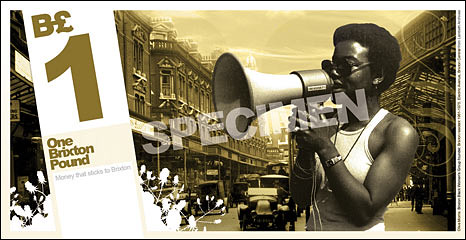
Proponents of local currencies say they boost the community's economy by keeping money in the area, but critics dismiss them as fashionable gimmicks, tantamount to protectionism.
They may sound experimental but have in fact been used since the Middle Ages when local currencies were all there was - it was not until the 1700s that every European country had its own currency, says Tim Leunig, an economist at the LSE.
Brixton, with its reputation for bustling streets, a lively nightlife and a notoriety for street crime, is the first urban area to have its own currency.
Volunteers behind the project say it has not been an easy sell.
Some shopkeepers are concerned about counterfeiting and the build-up of Brixton pounds in their till. Others see it as a novel advertising tool that could become gift vouchers, or even a collector's item.
Other economists dismiss the whole concept as a gimmick.
"It might make people feel good, but it's not achieving anything meaningful," says Tim Leunig, of LSE.
To read the complete article, see: No money? Then make your own (news.bbc.co.uk/2/hi/uk_news/magazine/8245276.stm)

Pre Launch Trial

Circulating £10
CACHE OF COINS FROM THE BAR-KOKHBA JEWISH REVOLT FOUND
 The largest cache of rare coins ever found in a scientific excavation from the period of the Bar-Kokhba revolt of the Jews against the Romans has been discovered in a cave by researchers from the Hebrew University of Jerusalem and Bar-Ilan University.
The largest cache of rare coins ever found in a scientific excavation from the period of the Bar-Kokhba revolt of the Jews against the Romans has been discovered in a cave by researchers from the Hebrew University of Jerusalem and Bar-Ilan University.
The coins were discovered in three batches in a deep cavern located in a nature reserve in the Judean hills. The treasure includes gold, silver and bronze coins, as well as some pottery and weapons.
The discovery was made in the framework of a comprehensive cave research and mapping project being carried out by Boaz Langford and Prof. Amos Frumkin of the Cave Research Unit in the Department of Geography at the Hebrew University, along with Dr. Boaz Zissu and Prof. Hanan Eshel of the Martin (Szusz) Department of Land of Israel Studies and Archaeology at Bar-Ilan University, and with the support of the Israel Nature and Parks Authority.
The some 120 coins were discovered within a cave that has a "hidden wing," the slippery and dangerous approach to which is possible only via a narrow opening discovered many years ago by Dr. Gideon Mann, a physician who is one of the early cave explorers in modern Israel. The opening led to a small chamber which in turn opens into a hall that served as a hiding place for the Jewish fighters of Bar-Kokhba.
Most of the discovered coins are in excellent condition and were overstruck as rebels' coins on top of Roman coins. The new imprints show Jewish images and words (for example: the facade of the Temple in Jerusalem and the slogan "for the freedom of Jerusalem"). Other coins that were found, of gold, silver and bronze, are original Roman coins of the period minted elsewhere in the Roman Empire or in the Land of Israel.
Dr. Zissu points out that one of the fascinating aspects of the Bar-Kokhba revolt is the intensive use of the rebels and Jewish refugees of natural and man-made caves as hiding and refuge places in the face of extensive Roman search-and-destroy missions. Those who fled to the caves took with them food, weapons, drinks, coins and various documents. Sometimes they even took with them the keys to their houses that they abandoned in the hope that one day they would be able to return to them.
Apparently, the people who left behind the cache of coins that has now been found did so during the period of the revolt, following their flight from their homes or from battle with the Romans; however they were unable to return to their hiding place to recover their valuables.
To read the complete article, see: Largest-ever collection of coins from Bar-Kokhba revolt found (http://www.physorg.com/news171711638.html)
This article has some great photos of the exploration of the cave and recovery of the coins and artifacts: Bar-Kochba Treasure Discovered in Judean Hills (www.israelnationalnews.com/News/News.aspx/133354)
THE ENGLISH PENNY - EUROPEAN DIRECTIVE
The English Penny
EU Directive No. 456179
In order to meet the conditions for joining the Single European currency, all citizens of the United Kingdom of Great Britain and Northern Ireland must be made aware that the phrase 'Spending a Penny' is not to be used after 31st December 2009.
From this date, the correct terminology will be: 'Euronating'.
Thank you for your attention.
To read the earlier E-Sylum articles, see:
QUIZ QUESTION: SPEND A PENNY
(www.coinbooks.org/esylum_v10n21a24.html)
QUIZ ANSWER: SPEND A PENNY
(http://www.coinbooks.org/esylum_v10n22a15.html)
FEATURED WEB SITE: THE KITTREDGE COLLECTION
This week's Featured Web site is The Kittredge Collection, suggested by Joe Ciccone of the American Numismatic SOCIETY.
John Kittredge was well known as a generous and supportive member of the numismatic community, both in Worcester, Massachusetts and in New England. Much of his collection concentrates on Crowns and Talers from the 15th century onward. He also has a collection of U.S. coins, New England Numismatic Association (NENA) medals, tokens and other items. All told he had over 7,200 coins and other items that are now in the collection.
Upon his death, John's collection went to the Kittredge Numismatic Foundation. The mission of the Foundation is to preserve John's collection, to promote numismatics in the New England region, and to generally provide an educational and research source for the greatest community possible.
Because of the scope and nature of John's collection, and the endowment of the Foundation, there is an exciting prospect to achieve John's goals, although one that does not lend itself to the traditional museum setting. It was decided, therefore, to create a "virtual museum" for the coins and medals.
www.kittredgecollection.org/


